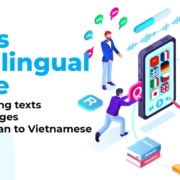Janusworldwide Presents Multilingual Guide
The Janus Worldwide translation company is pleased to present its new project: Janus Multilingual Guide, an official guide on formal language rules. Janus Multilingual Guide is a batch of recommendations for 72 languages from Albanian to Vietnamese. Finally, you have a one-stop shop for all your language-related questions like
- what punctuation marks, special characters and symbols are used and when to use them,
- how to localize dates, times, numbers, currencies and measurement units,
- how to localize addresses and telephone numbers,
- how to format lists and citations,
- how (not) to organize user interface elements
and much more.
Janus Worldwide is familiar with the difficulties language professionals can encounter when searching for reliable information on formatting materials in various foreign languages, and we drew on that experience when creating this guide. To solve these problems, Janus’s specialists assembled their own detailed guide.
It took three years for this idea to become a reality. Quality control, resource management and language services specialists collaborated to develop Janus Multilingual Guide. Two independent linguists worked on each language, and their work was checked by Janus Worldwide’s quality control team.
Janus Multilingual Guide will be helpful to translators, editors, proofreaders, QA specialists, copywriters, content managers, project managers, localization managers, and even clients who haven’t yet created their own style guides. With this resource at your fingertips, you can create uniform translations that conform with current stylistic norms.
The guide is available now for unlimited use as an open resource, and we are eager to hear your feedback. Send your ideas, comments and suggestions to QMS@janusww.com.
Janus Worldwide plans to incorporate Janus Multilingual Guide’s recommendations into QA profiles, QA modules and checklists used for automatic translation quality assurance.
“MultiGuide will be helpful to people who work with different languages and frequently have to incorporate different elements like dates, dashes, quotation marks and measurement units into a unified and, more importantly, grammatically correct whole. MultiGuide provides detailed descriptions of a large number of formal language rules, but it is still very compact. We tried to structure the information so that it would be as easy and convenient to work with as possible,” notes Ekaterina Amelichkina, a senior proofreader in the Quality Control Department.
Alena Idelchik, head of the Language Services Department, commented, “The idea for MultiGuide was born in the Quality Control Department. Checking texts in different languages against formal rules for consistent punctuation, date formats, currencies and capitalization, we often saw differences between languages. We used to reach out to linguists to confirm which formats were correct. Then we started thinking about putting together our own guide. We felt that it was important not only to compile rules but also to supply reputable information sources. This is how we came up with the idea of consulting two linguists [for each language] to guarantee that our sources were correct and “normative.” Our company resource managers helped us out a lot, since we needed to find highly qualified language specialists to work on this project. Later our own Language Services Department joined in. And so these three groups combined our efforts during the longest stage of working on MultiGuide. But we aren’t finished yet. We plan to use the information we’ve gathered to develop client style guides and templates for automatic checks in different CAT tools and QA tools that we use.
Creating MultiGuide is an important, large-scale project, and we decided to share it with our colleagues in the industry. We’re proud of our work and we care about language. It’s a living thing that’s constantly changing. We hope that linguistic enthusiasts will send us links to new resources. We’ll keep our guide up to date.”





